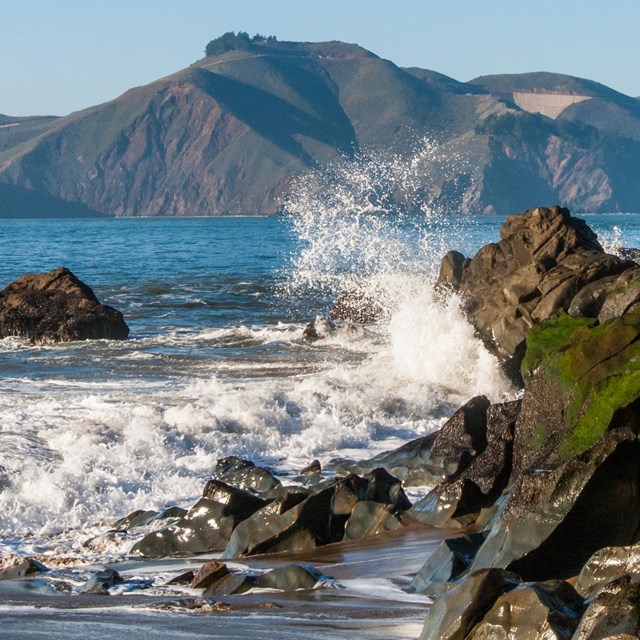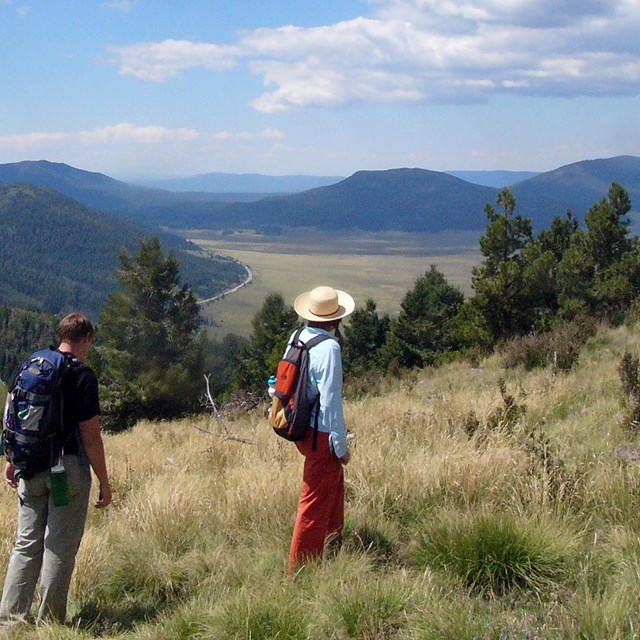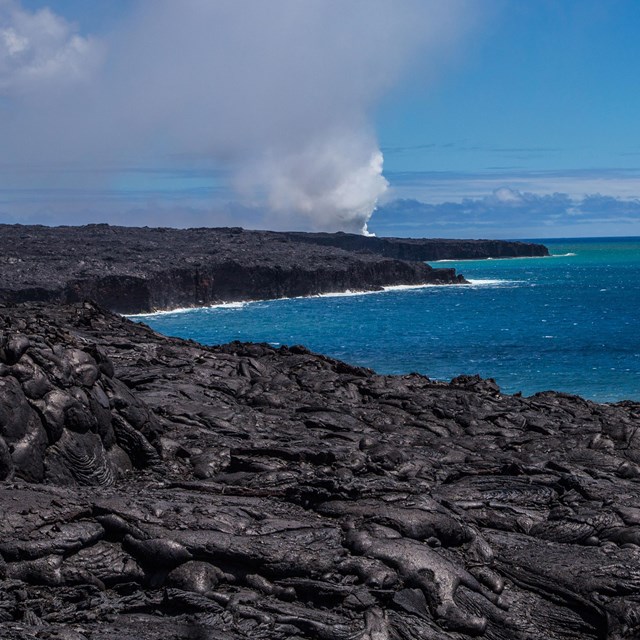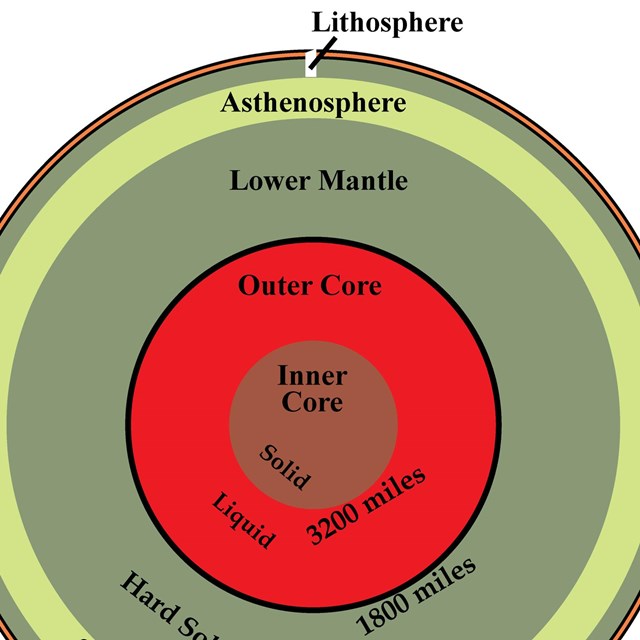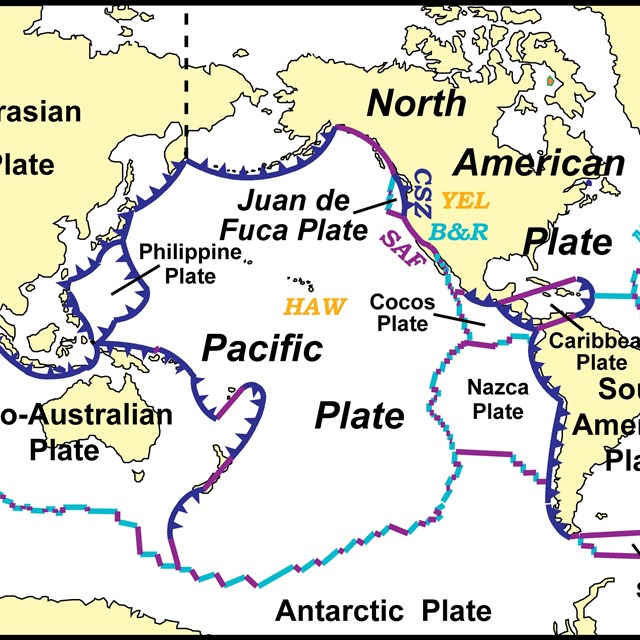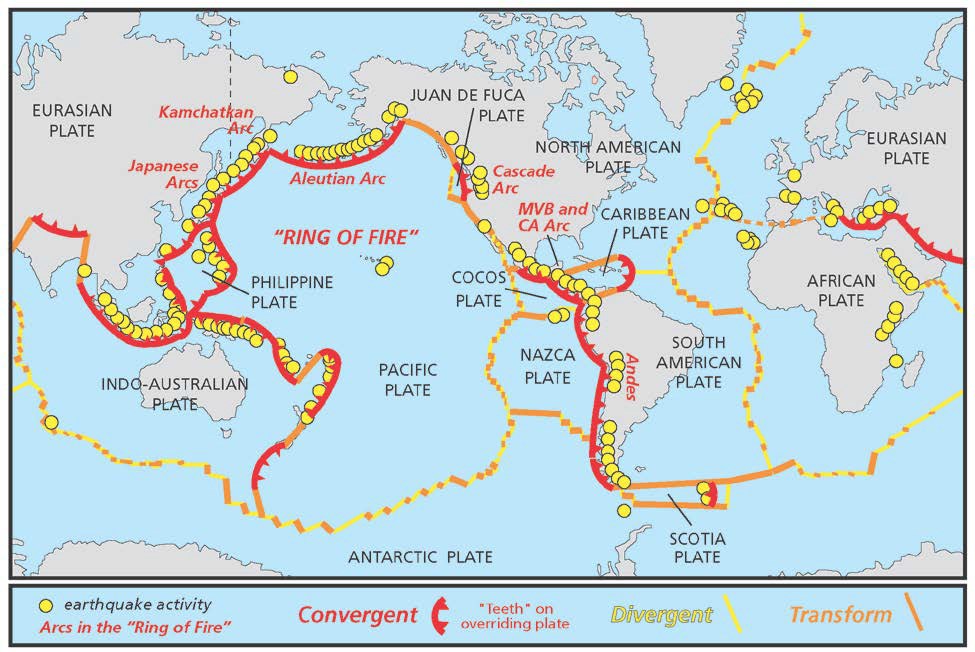
Introduction
Earth’s outer shell is broken into tectonic plates that move relative to one another. The plates rip apart at divergent plate boundaries, crash together at convergent plate boundaries, and slide past each other at transform plate boundaries. Tectonic activity such as earthquakes, volcanic eruptions and the formation of mountain ranges commonly occurs along the boundaries of the moving plates.
Volcanism at Plate Boundaries and Hotspots
Two types of Plate boundaries are often associated with volcanic eruptions:
- Plates rip apart at a divergent plate boundary, causing volcanic activity and shallow earthquakes; and
-
At a convergent plate boundary, one plate dives or “subducts” beneath the other, resulting in a variety of earthquakes and a line of volcanoes on the overriding plate.
Another feature associated with volcanic activity is a hotspot, where a rising plume of hot mantle can lead to volcano formation at the surface. As the tectonic plate moves above a hotspot, a line of volcanoes may form on top of the plate.
Learn More
Volcanic Eruptions
Volcanic activity occurs above places in the Earth where pressure, temperature, and the presence of water conspire to melt rock. There are two main ways Earth materials melt: 1) hot mantle rises and decompresses; and 2) water flows through hot rock. The first type of melting occurs at diverging plate boundaries (mid-ocean ridges; continental rift zones) and hotspots, where mantle beneath plates is hot but remains solid because it is under great pressure. As the hot mantle rises, sudden drop in pressure causes melting, much as taking the lid off a pressure cooker causes super-heated water to flash to steam. The second mechanism results in volcanism at convergent plate boundaries. As one plate dives (subducts) beneath the other, it heats up and releases hot fluids (similar to the way we sweat when we get hot). The fluids (mostly water) rise, wetting hot rock in their path and causing some of the rock to melt.
Learn More
Last updated: June 8, 2022

